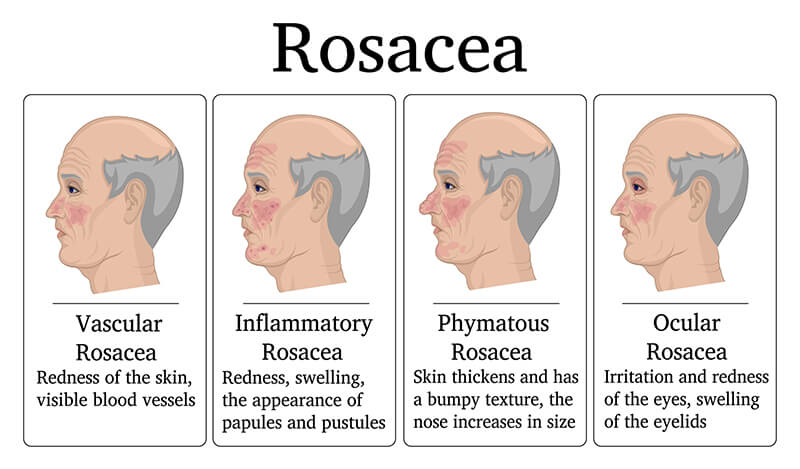How to treat rosacea
If your cheeks are constantly rosy, chances are it’s not a permanent state of embarrassment. It may be a chronic skin condition known as rosacea.
The non-contagious condition is fairly common, affecting around 45 million people worldwide, including more than a million Australians.
While there’s no cure, treatments can reduce its appearance and severity.
So what is rosacea, exactly?
“Rosacea is characterised by flushing and redness, dilated blood vessels, and red lumps or pus-filled spots on the cheeks, forehead, chin and nose,” says dermatologist Dr Samantha Eisman.
What causes rosacea?
The cause of rosacea is unknown, says Dr Eisman.
“It’s likely that rather than a singular cause, a combination of factors are involved,” she says.
Dr Eisman believes such factors include:
Environmental: Chronic sun exposure caused by extreme heat and wind.
Genetic: Rosacea tends to run in families and affects those of northern European/Celtic ancestry at a higher rate. It’s more common in women and typical onset is 30 to 60 years old. It is typically more severe in men.
Infection: Recent studies have found people suffering from rosacea tend to have a higher incidence of demodex mite (tiny, non-disruptive mites that live on our hair follicles). Others may carry the stomach bug helicobacter pylori.
Medication: Both oral and topical steroids are known to aggravate or induce.
Immune Dysregulation: Some people have an impaired immunity response in their skin, causing a higher concentration of a protein called cathelicidin. This leads to skin being overprotected, which then contributes to rosacea symptoms such as redness and swelling.

Why do rosacea symptoms vary?
“Rosacea can present itself in different ways depending on the type,” says Dr Eisman.
The condition is not caused by alcohol, though its consumption can cause pre-existing rosacea to flare up.
Some people experience redness, flushing and visible blood vessels on the face, while others develop red lumps, acne-like spots and sensitive skin.
“You could also experience swelling and thickening of the skin and some sufferers may have a history of triggering factors such as heat, spicy foods and alcohol,” says Dr Eisman.
How is rosacea treated?
Dr Eisman says there is no cure for rosacea, or a specific treatment to control the condition.
“But combination long-term treatments can be effective,” says Dr Eisman.
- Related story: 6 skin no-nos you should stop doing now
Dr Samantha Eisman’s top tips for managing rosacea
Avoid triggers
Monitor what triggers your rosacea to flare up and worsen so you can do your best to eliminate it from your lifestyle.
Common triggers are sun exposure, hot food and alcohol, so it’s a process of elimination.
Simple skincare
Less is best for rosacea sufferers, as irritants can trigger flare-ups.
Dr Eisman suggests rosacea sufferers avoid anything abrasive or astringent like certain toners, scrubs and peels.
She also recommends using oil-free products and sunscreen rather than fragranced products and waterproof cosmetics.
Topical treatments
Antibiotic or anti-inflammatory creams and gels are available by prescription.
Some dermo cosmetics containing natural ingredients that have anti-redness properties are available over the counter at pharmacies.
Oral medications
Oral antibiotics are another solution and are typically prescribed for six to 12 weeks, depending on the severity of rosacea.
For severe cases, B Blockers or other heart medication can be prescribed.
Laser
Usually very effective, vascular or IPL treatments offer a more permanent fix for cases of a persistently flushed appearance.
Surgery
For sufferers with firm swelling and enlargement of facial features, surgical options like ablative laser or electrosurgery may be necessary.
Eyes
Ocular rosacea is caused by a similar inflammatory response as typical rosacea, but requires treatment by an ophthalmologist.
Need some more skin tips? Check out how to look after your skin as you age, the main active skincare ingredients for glowing skin and foods that will help you glow from the inside.
Written by Charlotte Brundrett.






